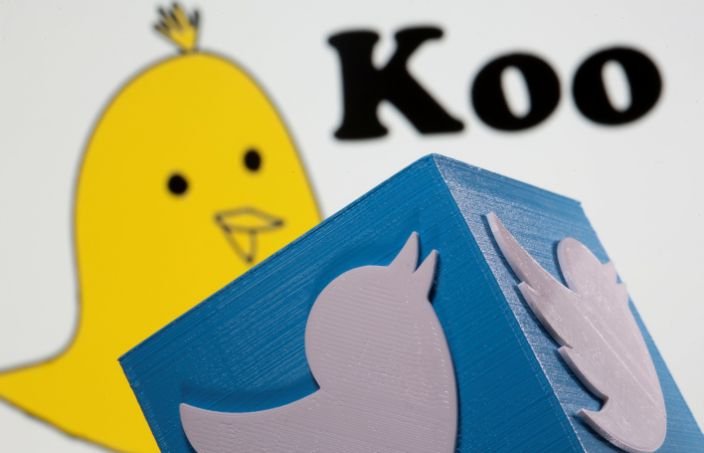The Koo logo is becoming increasingly common on Indian phones.

A small yellow teat is gaining prominence in India as a result of tensions between Twitter and the Indian government.
Koo, a new microblogging app, is being used by government departments to rival America’s larger.
Twitter’s ‘double standards’
The Indian government had demanded that Twitter take possession of certain accounts claiming that they were spreading fake news.
It accused Twitter of “double standards” by taking action against those accused of spreading false or misleading information during the siege of the US Capitol Building, but against similar actors during protests at the Red Fort in Delhi on 26 January.
Twitter initially complied but then overturned its decision by restoring suspended accounts.
The list of accounts blocked by the government included journalists, news organizations and opposition politicians.
Indian government’s war with Twitter
Meanwhile, supporters of the Indian government, including ruling party politicians, are voting with their fingers and using Koo’s new platform to express their opinions. He has also shared the hashtag banned in India on Twitter.
What can Koo do?
Koo’s special attraction to Indian microbloggers is that it currently operates in five national languages, with plans to introduce 12 more in English.
Launched in March last year, it has received an award from the Government of India, which is striving for greater self-reliance.
Koo functions similarly to Twitter and claims to have attracted three million downloads since its launch, with a third of them describing it as active users.
Who is behind Koo?
Earlier this month, Koo’s parent company, Bangalore-based Bonnet Technologies, raised $ 4.1m (£ 3m) in funding for the project.
One of its main supporters is Mohandas Pai, known as the co-founder of IT giant Infosys in India and an outspoken supporter of India’s BJP-led government.
With its “Made in India” push, many users on Twitter had reported that it also had Chinese support.
But Koo’s chief executive officer Apamya Radhakrishna says that although some Chinese-based investment was quick, it was no longer the case.
Several Donald Trump supporters had moved Parler when Twitter began blocking their accounts. Similarities are being drawn by Donald Trump’s supporters moving from Twitter to sites like Parler
Is Koo the Parler of India?
The Parler positioned itself as a “free speech” platform, and quickly became popular with supporters of former US President Donald Trump, as well as conspiracy theory groups such as Qiyeon, many of whom were disillusioned with Twitter .
Twitter’s loss has been Koo’s gain, with many Indian ministers and government departments, as well as some celebrities, creating accounts.
Many of his supporters and followers have also followed him on the new app.
Recently, India’s Electronics and Information Technology Minister Ravi Shankar Prasad said that his app now has more than 500,000 followers. His ministry account has grown by more than 160,000 in the last few days.
Mr. Radhakrishna said in a statement, “We are excited about the adoption and encouragement by very notable personalities and entering the country’s highest government offices at the same time.”
Koo App on smart phone
Indian ministries are now favoring Koo as their chosen means of communication, Last month, a local television station, Republic TV, announced an editorial partnership with Koo.

